Srishti Sthiti Vinashanam, Shaktibhute, Sanatani।
Gunashraye, Gunamaye, Narayani, Namostu Te॥
(O eternal one – You reside in all creation, preservation, and destruction! You are the refuge of the virtues and possessor of the virtues! Salutations to you Narayani!)
Vijayadashami or Bijoya
Dusshera is perhaps the most versatile festival in India. Every part of the country has its own version of this celebration. For West Bengal, Dusshera is celebrated as Vijaya or Bijoya. The local story connected to Durga Puja is not of valour or violence. It is of love and family. Goddess Durga, being married to the mendicant Shiva, leads a tough life in Mountain Kailash. Deeply entrenched in poverty, she can barely make ends meet. However, being the daughter of Himalaya, the King of Mountains, she is a princess so used to royal luxuries.
The Story of Durga Puja in Bengal

So for 4 days every year, she returns back to her parents’ place with her children Lakshmi, Saraswati, Kartik, and Ganesh for a comfortable vacation. She is worshipped elaborately, clothed in the finest saris and ornaments, fed choicest delicacies finishing off with betel leaf or paan. On Dashami, it is time for her to leave and return back to her husband Shiva in Kailash. She is bid adieu amidst tears and is provided copious sweets and paan for her long journey back to the mountains. The Goddess is then seen off by way of immersion of the Durga idols in the River Ganga.
Durga Puja Greetings
People in Bengal greet each other “Shubho Bijoya” (“Happy Bijoya”), touch the feet of seniors, and hug peers. They visit each other with sweets and occasional savouries. This is how Durga Puja, the largest festival in Eastern India is over.
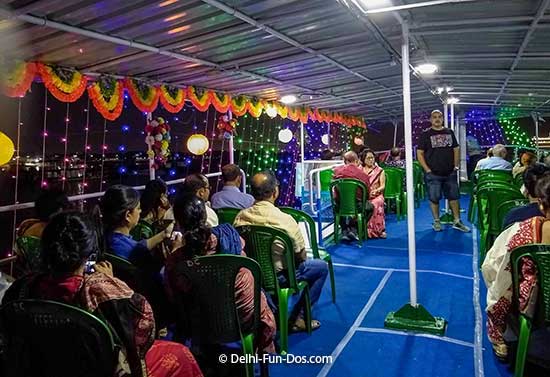
Ferry Ride for Durga Visarjan by West Bengal Tourism
We had booked a ferry tour organised by West Bengal Government tourism department to see the spectacle from afar.
Durga Visarjan Ceremony
Last year, we had the opportunity to participate in a Durga Puja immersion ceremony in Kolkata. The Dashami Puja was over in the day, and the priest had marked the end of Durga Puja by releasing divinity from the idols as well as the holy urn or ghat. The last ritual was to see the Goddess’s feet in a tub of water, marking the immersion. All that was left was to actually immerse the idol in the Ganges.
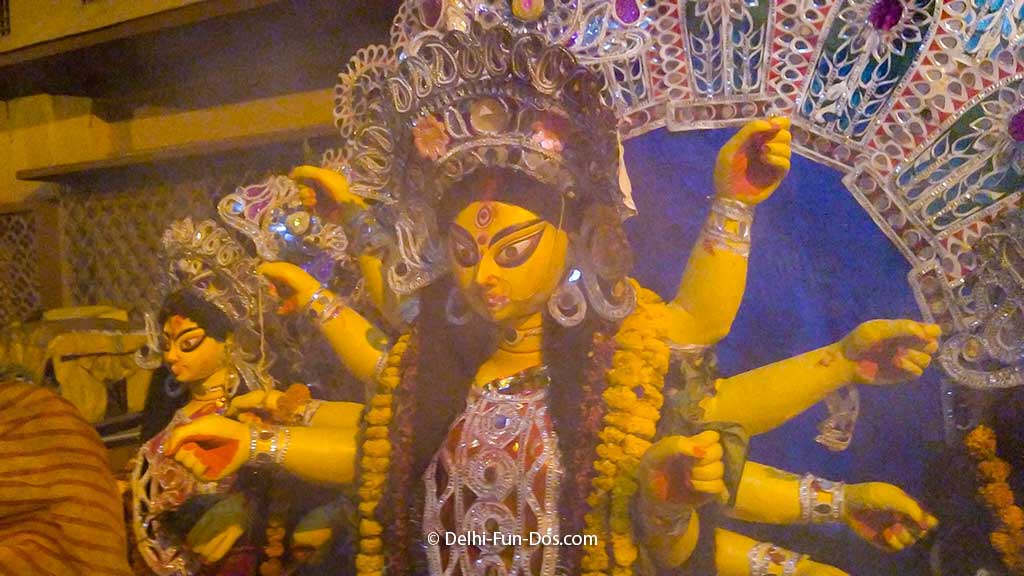
The Day Rituals of Bijoya
But Durga in Bengal was the married daughter who was travelling back to her husband’s place. Thus all rituals of a bride’s farewell was performed with the idol. Rice and coins were pored through the Goddess’s arms to the women of the household to signify that Durga was repaying all her debts to her parents for the 4 days of comfort. Women then performed the Baran ritual smearing sindoor on the forehead of the idols feeding them sweets and paan, and whispering goodbyes in the ear of the idols. The married women then smeared sindoor on each other’s forehead as a goodwill gesture wishing long life of the husbands. By way of festivities, it became an untimely Holi, and the red powder was smeared on the guys too. Ultimately we wore a red Halloween look!

Taking the idol for Durga Visarjan
It was evening by then and the idol was lifted on a carriage vehicle. Given that it was a six-foot-high bamboo, rope, wood, and clay structure, 5 feet in breadth, that was no easy task. Sundeep and 4 other people carried the statue among dhak drums, blowing of conch shells and ululations by local women. People from the neighbourhood boarded the truck and went for a round of the neighbourhood. Meanwhile, many ladies boarded another truck that had chairs for people who would find standing difficult. We soon embarked on the way to Babughat, the river bank designated for the immersion of smaller idols.
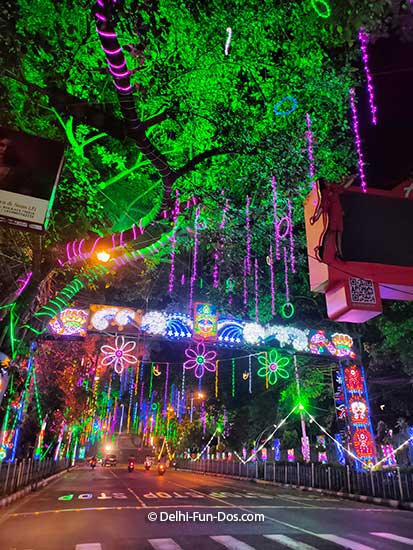
Travelling on an open truck amidst the festive-lit streets of Kolkata was a surreal experience. We saw the lights of Park Street and passed by Victoria Memorial, Birla Planetarium, and Eden Gardens which all you cricket buffs would be familiar with. The traffic was smooth given the excellent work of Kolkata Police.
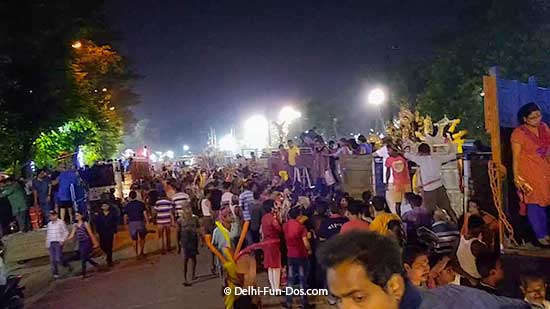
In fact, as we approached the immersion area, we saw an array of vehicles parked in parallel to each other. The Police directed us to an empty spot and our driver deftly parked the truck making sure that the idol could be brought out easily.

A group of helpers approached us offering their Durga Visarjan services. After some good-hearted bargaining, they got their set of guys who brought down the idol from the truck while all of us danced to the myriad dhaks beating from all vehicles. In fact, singing and dancing at the immersion procession was part of the rituals since the Goddess had to be bid adieu amidst gaiety. Whistles and noisy balloons added to the merry pandemonium.
Durga Visarjan – The Goodbye
By this time the professionals had got the idol down and rotated her 7 times as part of the rituals. They then started carrying the idol to the water and everyone followed. Few metres away from the brink, the accompanying group was stopped and only 2 people were allowed till the bank. The professionals stopped for a moment at the bank and then dropped the statue in the water head up. It was a sad moment and many eyes welled up. But nobody had the time to be sad and people were escorted away from the bank to make for the next party.
We boarded back on our truck, but not before having icecreams and multiple rounds of lebu-cha, our favourite lemon tea in Kolkata. Now that the immersion was completed smoothly, the way back was relaxed. We chatted around and got acquainted with new people.
Looking Forward to the next Durga Puja
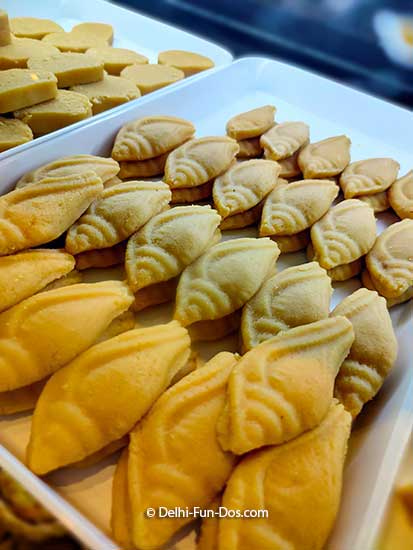
Once we reached the Puja venue, there was a last ritual. The main urn for the Puja had been filled with Ganges water soon after the Durga statue was immersed. A senior from the neighbourhood chanted the Shanti Mantra and sprinkled that on us. This was by way of blessing for the next year. There was some more dancing to drum beats, eating mishti, and wishing each other Shubho Bijoya. The experience was a combination of divinity with fun and we were humbled and overwhelmed to have had this opportunity of enjoying Pujo like a local.
Durga Visarjan has a deeper significance. It reiterates the Hindu philosophy – Srishti – Sthiti – Pralay which means the cycle of Creation – Preservation – Destruction. It implies that nothing is permanent – every situation is temporal. In order to foster creation, destruction is equally important.
Here is to new beginnings! Shubho Bijoya from us!



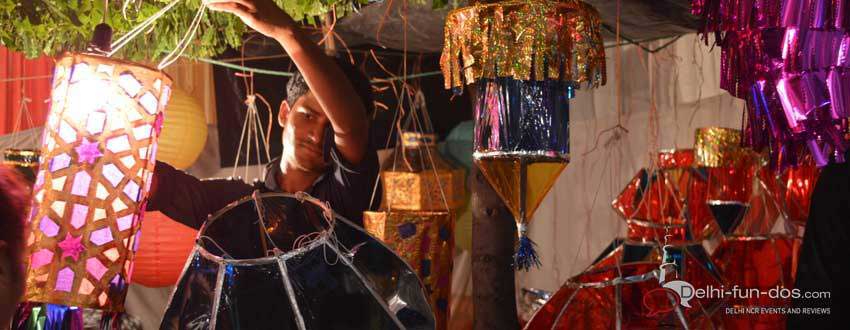
0 Comments